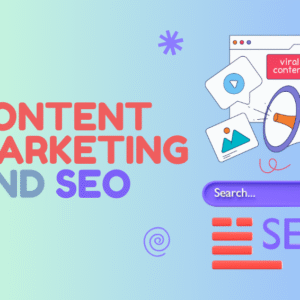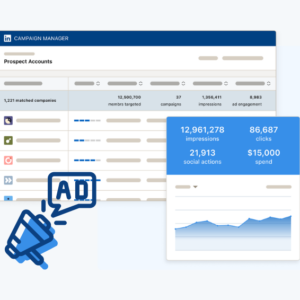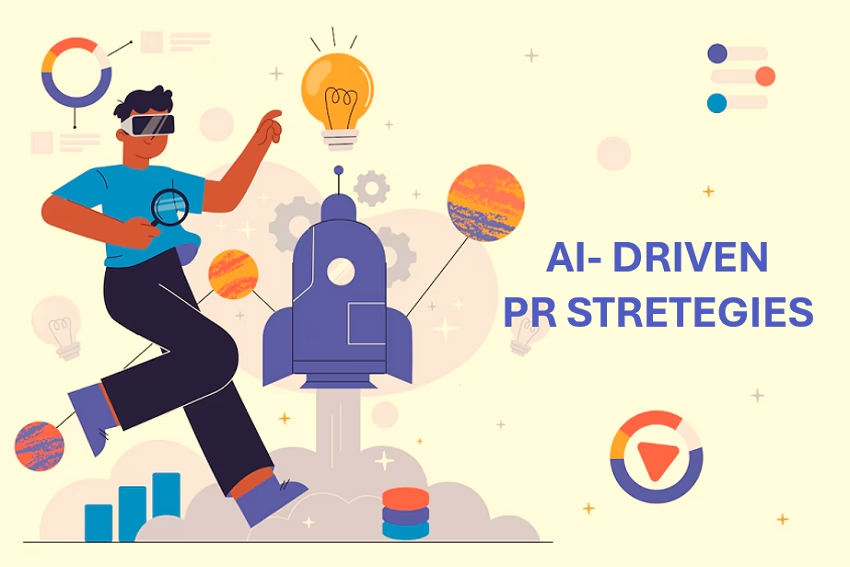Do you also receive an email or promotional offer from a company side? Don’t worry; you are not alone; many people receive these types of offers. For example- Swiggy especially sends these promotional offers on the occasion of your birthday or any festival.
In this blog, we will explore Permission Marketing Steps, how it works, and their benefits.
Permission-Based Marketing – An Overview
Permission-based marketing is a strategy that involves obtaining explicit permission from consumers before sending them marketing messages. It is also known as opt-in marketing or consent marketing.
The idea behind permission-based marketing is to build trust with customers by respecting their privacy and preferences. When consumers provide their permission, they indicate they are interested in receiving marketing messages from a particular company, increasing their chances of engaging with the content.
To implement permission-based marketing, companies typically offer customers the opportunity to opt-in through various channels, such as email, text message, or social media.
Companies may also provide incentives to encourage customers to opt-in, such as exclusive discounts or access to premium content.
Once customers have opted in, companies can send targeted marketing messages based on their preferences and interests. This can include newsletters, promotional offers, or personalized recommendations. By focusing on the needs and interests of the customer, companies can improve their chances of building a long-term relationship with them and driving sales.
It’s worth noting that permission-based marketing requires companies to adhere to strict regulations around data privacy and anti-spam laws. This means that companies must obtain explicit consent from customers before sending them marketing messages and provide an easy way for them to opt out at any time.
Types Of Permission-Based Marketing
There are several types of permission-based marketing. Some of them are as follows:
Email marketing
Email marketing involves sending promotional messages to individuals who have provided their email addresses and given permission to receive marketing messages. It includes newsletters, special offers, and other promotional content.
SMS Marketing
SMS marketing involves sending promotional messages to individuals who have provided their mobile phone numbers and given permission to receive marketing messages. This can include alerts, special offers, and other promotional content.
Social Media Marketing
Social media marketing includes advertising products or services through social media platforms like Facebook, Instagram, and Twitter. This can include targeted ads, sponsored posts, and other forms of content.
Content Marketing
Content marketing involves creating and sharing valuable content, such as blog posts, videos, and infographics, to attract and retain a specific audience. This marketing type often requires the audience’s permission to receive updates or notifications.
Direct Mail Marketing
Direct mail marketing involves sending promotional messages through physical mail, such as flyers, brochures, and catalogs. This type of marketing often requires permission from the recipient to receive mailings.
These types of permission-based marketing show how businesses can use customer consent to deliver targeted, personalized, and valuable marketing messages that resonate with their audience.
Benefits Of Permission-Based Marketing,
The benefits of permission marketing are numerous. By only targeting those who have expressed an interest in a particular product or service, companies can increase the likelihood of generating leads and making sales.
Some of the best Benefits of Permission Marketing are:
Increased engagement
When consumers give their permission to receive marketing messages, they are more likely to engage with the content because it is relevant and exciting to them. This can lead to higher open, click-through, and conversion rates.
Improved targeting
Permission-based marketing allows marketers to tailor their messages to the interests and needs of the individual consumer. This can result in more effective targeting and a better overall customer experience.
Greater trust
By obtaining permission before sending marketing messages, marketers respect consumers’ privacy and preferences. This can lead to greater trust between the consumer and the brand, improving customer loyalty and retention.
Higher conversion rates
Permission-based marketing allows marketers to target individuals who have already expressed an interest in their product or service, which can result in higher conversion rates than traditional marketing methods.
Overall, permission-based marketing can be an effective way for marketers to build relationships with their customers and increase their marketing efforts’ effectiveness while complying with regulations and respecting consumer preferences.
Examples of Permission Marketing
Permission Marketing strategy helps to build stronger and more trusting relationships between businesses and customers. Some examples of permission marketing:
Email Newsletters
Businesses can ask customers to sign up for email newsletters to receive regular updates about new products, sales, and other promotions. The option to unsubscribe from receiving the emails is always available to the customer.
Social Media Promotions
Companies can ask customers to follow them on social media platforms like Facebook, Twitter, or Instagram to receive exclusive promotions and discounts.
Loyalty Programs
Retailers can offer loyalty programs that provide discounts and other rewards to customers who regularly shop with them. Customers opt-in by providing personal information and agreeing to the program’s terms and conditions.
SMS Marketing
Businesses can ask customers to opt-in to receive text message promotions and updates. Customers can opt-out at any time.
Online Surveys
Companies can invite customers to complete online surveys to receive discounts or other rewards. Customers opt-in by providing their email addresses and agreeing to receive promotional emails.
These are just a few examples of permission marketing. The key to success is to provide customers with valuable information and offers they are interested in receiving while respecting their privacy and preferences.
Difference Between Permission-Based Marketing and Interruptive Marketing
Permission marketing and interruptive marketing are two different approaches to marketing that have distinct differences in terms of their strategies and effectiveness.
Permission marketing is a type of marketing where the marketer seeks the explicit permission of the consumer to send them promotional messages or information.
While Interruptive marketing is a traditional form of marketing that relies on interrupting a customer’s attention with ads or other promotional messages. Examples include TV commercials, website banner ads, pop-up ads, and telemarketing calls. The goal is to grab the customer’s attention and promote a product or service, even if the customer has yet to express interest or give permission to receive the message.
Here are some of the critical differences between permission marketing and interruptive marketing:
- Permission marketing is opt-in, while interruptive marketing is opt-out: With permission marketing, the consumer actively chooses to receive marketing messages from the marketer, whereas, with interruptive marketing, the consumer is subjected to marketing messages unless they actively opt-out.
- Permission marketing is focused on the consumer, while interruptive marketing is focused on the marketer: With permission marketing, the marketer seeks to provide value to the consumer by offering relevant and valuable content, whereas with interruptive marketing, the marketer seeks to promote their products or services, often regardless of whether they are relevant or valuable to the consumer.
- Permission marketing is a long-term strategy, while interruptive marketing is a short-term strategy: With permission marketing, the marketer seeks to build a long-term relationship with the consumer by providing value and building trust over time, whereas with interruptive marketing, the marketer seeks to generate immediate sales or conversions.
- Permission marketing is less intrusive, while interruptive marketing is more intrusive: With permission marketing, the marketer is less likely to be seen as intrusive because they are only sending messages to consumers who have given explicit permission, whereas with interruptive marketing, the marketer is more likely to be seen as intrusive. After all, they are interrupting the consumer’s attention.
Overall, permission marketing is a more customer-centric approach that seeks to build long-term consumer relationships by providing value and building trust over time. In contrast, interruptive marketing is a more marketer-centric approach that seeks to generate immediate sales or conversions by interrupting the consumer’s attention.
How Does Permission Marketing Work?
Permission-based marketing is an approach based on the idea that consumers are more likely to respond positively to marketing messages if they have given their permission to receive them. Here’s how it works:
Asking For Permission
In permission-based marketing, businesses ask consumers for explicit consent to receive marketing messages. This can be done through website opt-in forms, at the point of sale, or other means.
Providing Value
Once a consumer has given their permission to receive marketing messages, businesses need to provide them with value. This can be exclusive content, discounts, or other incentives that make the consumer feel like they are getting something of value in exchange for their permission.
Segmentation
Permission-based marketing also involves segmenting consumers based on their interests and preferences. This allows businesses to tailor their marketing messages to specific groups of consumers, which can increase the likelihood of a positive response.
Honoring Opt-Outs
Consumers should always have the option to opt-out of receiving marketing messages. In permission-based marketing, businesses must honor these opt-outs and stop sending messages to consumers requesting removal from the marketing list.
Conclusion
In conclusion, permission-based marketing is a marketing strategy that involves obtaining explicit consent from individuals before sending them promotional messages or engaging in other marketing activities. It is based on building trust and fostering positive relationships between marketers and consumers. The process involves offering an opt-in, obtaining explicit consent, providing value, and respecting preferences. By following these steps, marketers can create a more engaged and loyal customer base while avoiding the negative consequences of unwanted and intrusive marketing tactics.
Permission-Based Marketing has become one of the crucial parts of digital marketing services. Permission-based marketing is a more effective and respectful way to engage with potential customers. It has become increasingly important in the digital age, where consumers have greater control over their online experiences.






